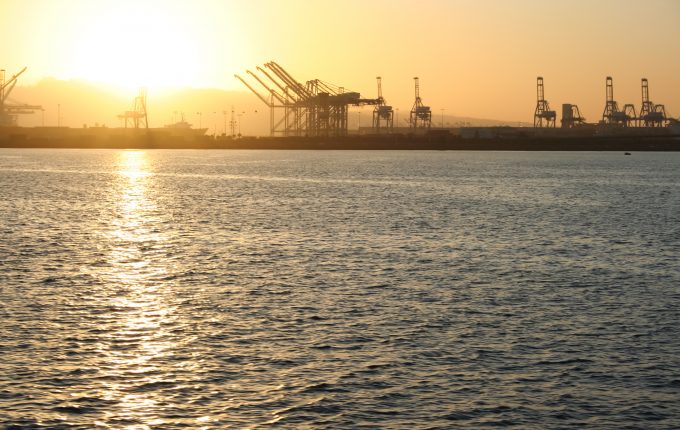Blank sailings on the rise at Canadian ports as carriers fret over rail strike
As uncertainty hangs over Canada’s rail system being shut down by a strike, shipping lines ...
TFII: SOLID AS USUALMAERSK: WEAKENINGF: FALLING OFF A CLIFFAAPL: 'BOTTLENECK IN MAINLAND CHINA'AAPL: CHINA TRENDSDHL: GROWTH CAPEXR: ANOTHER SOLID DELIVERYMFT: HERE COMES THE FALLDSV: LOOK AT SCHENKER PERFORMANCEUPS: A WAVE OF DOWNGRADES DSV: BARGAIN BINKNX: EARNINGS OUTODFL: RISING AND FALLING AND THEN RISING
TFII: SOLID AS USUALMAERSK: WEAKENINGF: FALLING OFF A CLIFFAAPL: 'BOTTLENECK IN MAINLAND CHINA'AAPL: CHINA TRENDSDHL: GROWTH CAPEXR: ANOTHER SOLID DELIVERYMFT: HERE COMES THE FALLDSV: LOOK AT SCHENKER PERFORMANCEUPS: A WAVE OF DOWNGRADES DSV: BARGAIN BINKNX: EARNINGS OUTODFL: RISING AND FALLING AND THEN RISING

Container spot rates on the two major tradelanes, Asia to the US and Asia to Europe, are showing some signs of softening, just over a week before the Chinese New Year holiday starts on 5 February.
Today’s Shanghai Containerized Freight Index (SCFI) recorded a 1% fall in rates to North Europe, to $960 per teu, and a 2.1% fall for rates to Mediterranean ports, to $957 per teu.
Headhaul liftings on the route have been very strong this month, for example this week saw the 20,170 teu MOL Tradition, operating within THE Alliance, discharge a record 18,767 teu of containers loaded with goods from the Far East at Southampton, Hamburg, Rotterdam and Le Havre .
Meanwhile, the Asia-US components of the SCFI recorded a fall of 3.5% for the US west coast and a 1.6% drop for US east coast ports, to $2,039 and $3,137 per 40 ft respectively.
Carriers on both routes will be looking to hold on to as much as possible of their gains from previous weeks in the traditionally soft demand period following the CNY.
Last year, spot rates on both trades collapsed after the holiday, which commenced on 16 February, and by the end of March rates recorded by the SCFI stood at just $633 per teu for North Europe and $615 for the Mediterranean. And for the transpacific things even worse for the carriers, at $1,127 per 40ft for the US west coast and $2,148 per 40ft for east coast ports.
However, this year the carriers have decided to adopt an aggressive blanking programme on both tradelanes to underpin rates and mitigate the impact of the slack booking.
The carriers hope this more judicious approach will avoid them having to offer discounts to fill their ships, thus sparking a contagion of rate cutting that would wipe millions of dollars off their Q1 top lines.
Moreover, Philip Blumenthal, VP of FBX at Freightos, suggested the continued uncertainty surrounding China trade tariffs could work in the transpacific carriers’ favour. With no further news emerging on the status of trade talks between the US and China, shippers could continue with their policy of front loading containers ahead of a tariff hike on 2 March, which “may lift demand and lessen the extent of the seasonal price falls”.
And in commentary to support the publication of its January XSI index today, freight rate benchmarking platform Xeneta notes that the proposed 25% tariffs are due to come into force at around the same time as the annual TPM conference in Long Beach, California, “where annual contract negotiations begin in earnest”.
Elsewhere, Lars Jensen, CEO and partner at SeaIntelligence Consulting noted that transpacific spot and contract rates as measured by the SCFI and CCFI had become “markedly more volatile” since “the crash of 2016”, when Hanjin Shipping filed for bankruptcy.
Conversely, Mr Jensen said, the extremely high spot rate volatility of the Asia-Europe trade in the years up to 2016 had “all but vanished”, but added that contract rate volatility had “increased sharply”.
Comment on this article